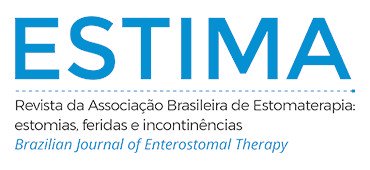IMMERSIVE VIRTUAL REALITY IN PAIN RELIEF IN PATIENTS WITH BURNS: SYSTEMATIC REVIEW AND META-ANALYSIS
Abstract
Objective: Evaluating the use of immersive virtual reality as a non-pharmacological intervention for pain relief and opioid consumption during dressing changes in patients with burn injuries. Methods: This review considered study designs, randomized clinical trials, non-randomized controlled trials, without restriction on the year of publication. An extensive search in six electronic databases (PubMed; EMBASE, Web of Science, CINAHL, Cochrane Library, Clinicaltrial.gov) was performed. RevMan version 5 software was used to carry out a meta-analysis. The certainty of the evidence was analyzed using GRADE. Results: Included 10 articles, total of 514 patients, aging 5 to 80 years old. In a combined analysis of pain variables, time thinking about pain from eight studies, the result favored the use of immersive virtual reality compared to control, the Standardized Mean Difference (SMD -0.86; 95% CI -1.22 - 0.49 N = 772 I2 = 82%). Conclusion: The evidence compiled in this review supports the use of immersive virtual reality to reduce pain.
Downloads
Metrics
References
Asselin K. Burns incidences and treatment in the United States. American Burn Association/ameriburn.org [internet]. 2020 jul;[citado em 01 de julho de 2022]; Disponível em: https://ameriburn.org/national-burn-awareness-week-2020/
Ministério da Saúde (BR). Um milhão de brasileiros sofre queimaduras por ano [Internet]. Brasília (DF): Ministério da Saúde; 2017.
Batista BD, Cordovil PB, Batista KNM. Perfil epidemiológico de pacientes que sofreram queimaduras no Brasil: revisão de literatura. Rev Bras Queimaduras. 2012;11(4):246–50. [citado 10 dez 2022]. http://www.rbqueimaduras.com.br/details/130/pt-BR/perfil-epidemiologico-de-pacientes-que-sofreram-queimaduras-no-brasil--revisao-de-literatura
Rossi LA, Camargo C, Santos CMNM, Barruffin RCP, Carvalho EC. A dor da queimadura: terrível para quem sente, estressante para quem cuida. Rev. latino-am. enfermagem - Ribeirão Preto 2000;8(3):26-18. https://doi.org/10.1590/S0104-11692000000300004
Jeffs D, Dorman D, Brown S, et al. Effect of virtual reality on adolescent pain during burn wound care. J Burn Care Res. 2014;35(5):395-408. https://doi.org/10.1097/bcr.0000000000000019
Silva A, Machado R, Simões V, Carrageta MC. A terapia da realidade virtual e a pessoa queimada: redução da dor nos cuidados à ferida – Uma revisão integrativa da literatura. Rev Bras Queimaduras. 2015;14(1):35-42. [citado 10 dez 2022]. http://www.rbqueimaduras.com.br/details/241/pt-BR/a-terapia-da-realidade-virtual-e-a-pessoa-queimada--reducao-da-dor-nos-cuidados-a-ferida---uma-revisao-integrativa-da-literatura
Hoffman HG, Rodriguez RA, Gonzalez M, et al. Immersive Virtual Reality as an Adjunctive Non-opioid Analgesic for Pre-dominantly Latin American Children With Large Severe Burn Wounds During Burn Wound Cleaning in the Intensive Care Unit: A Pilot Study. Front Hum Neurosci. 2019;13:262. https://doi.org/10.3389/fnhum.2019.00262
Scapin S, Echevarría-Guanilo ME, Fuculo-Junior PRB, Martins JC, Barbosa MVB, Simas C, de-Rosso LH, Gonçalves N. Realidade virtual no tratamento da dor em criança queimada: Relato de caso. Rev Bras Queimaduras 2017;16(1):45-8. [citado 10 dez 2022]. https://docs.bvsalud.org/biblioref/2018/09/915055/v16n1a08.pdf
Tufanaru C, Munn Z, Aromataris E, Campbell J, Hopp L. Systematic reviews of effectiveness. In: Aromataris E, Munn Z, editors. JBI Reviewer’s Manual [Internet]. Adelaide: JBI, 2017.
Page MJ, McKenzie JE, Bossuyt PM, Boutron I, Hoffmann TC, Mulrow CD, et al. The PRISMA 2020 statement: an updated guideline for reporting systematic reviews. BMJ 2021;372:n71. https://doi.org/10.1136/bmj.n71
Tufanaru C, Munn Z, Aromataris E, Campbell J, Hopp L. Systematic reviews of effectiveness. In: Aromataris E, Munn Z (Editors). JBI Manual for Evidence Synthesis. JBI, 2020.
Guyatt GH, Thorlund K, Oxman AD, et al. GRADE guidelines: 13. Preparing summary of findings tables and evidence profiles-continuous outcomes [published correction appears in J Clin Epidemiol. 2015 Apr;68(4):475]. J Clin Epidemiol. 2013;66(2):173-183. https://doi.org/10.1016/j.jclinepi.2012.08.001
Balshem H, Helfand M, Schünemann HJ, et al. GRADE guidelines: 3. Rating the quality of evidence. J Clin Epidemiol.2011;64(4):401-406. https://doi.org/10.1016/j.jclinepi.2010.07.015
Higgins JP, Thompson SG, Deeks JJ, Altman DG. Measuring inconsistency in meta-analyses. BMJ. 2003;327(7414):557-60. https://doi.org/10.1136/bmj.327.7414.557
Borenstein M, Hedges LV, Higgins JP, Rothstein HR. A basic introduction to fixed-effect and random-effects models for meta-analysis. Res Synth Methods. 2010;1(2):97-111. https://doi.org/10.1002/jrsm.12
Boers M. Graphics and statistics for cardiology: designing effective tables for presentation and publication. Heart.2018;104(3):192-200. https://doi.org/10.1136/heartjnl-2017-311581
Mayo-Wilson E, Li T, Fusco N, Dickersin K; MUDS investigators. Practical guidance for using multiple data sources in systematic reviews and meta-analyses (with examples from the MUDS study). Res Synth Methods. 2018;9(1):2-12. https://doi.org/10.1002/jrsm.1277
Stovold E, Beecher D, Foxlee R, Noel-Storr A. Study flow diagrams in Cochrane systematic review updates: an adapted PRISMA flow diagram. Syst Rev. 2014;3:54. https://doi.org/10.1186/2046-4053-3-54
Xiang H, Shen J, Wheeler KK, et al. Efficacy of Smartphone Active and Passive Virtual Reality Distraction vs Standard Care on Burn Pain Among Pediatric Patients: A Randomized Clinical Trial. JAMA Netw Open. 2021;4(6):e2112082. https://doi.org/10.1001/jamanetworkopen.2021.12082
Das DA, Grimmer KA, Sparnon AL, McRae SE, Thomas BH. The efficacy of playing a virtual reality game in modulating pain for children with acute burn injuries: a randomized controlled trial [ISRCTN87413556]. BMC Pediatr. 2005;5(1):1. https://doi.org/10.1186/1471-2431-5-1
Hua Y, Qiu R, Yao WY, Zhang Q, Chen XL. The Effect of Virtual Reality Distraction on Pain Relief During Dressing Changes in Children with Chronic Wounds on Lower Limbs. Pain Manag Nurs. 2015;16(5):685-691. https://doi.org/10.1016/j.pmn.2015.03.001
Hoffman HG, Patterson DR, Rodriguez RA, Peña R, Beck W, Meyer WJ. Virtual Reality Analgesia for Children With Large Severe Kipping B, Rodger S, Miller K, Kimble RM. Virtual reality for acute pain reduction in adolescents undergoing burn wound care: a prospective randomized controlled trial. Burns. 2012;38(5):650-657. https://doi.org/10.1016/j.burns.2011.11.010
Konstantatos AH, Angliss M, Costello V, Cleland H, Stafrace S. Predicting the effectiveness of virtual reality relaxation on pain and anxiety when added to PCA morphine in patients having burns dressings changes. Burns. 2009;35(4):491-499. https://doi.org/10.1016/j.burns.2008.08.017
McSherry T, Atterbury M, Gartner S, Helmold E, Searles DM, Schulman C. Randomized, Crossover Study of Immersive Virtual Reality to Decrease Opioid Use During Painful Wound Care Procedures in Adults. J Burn Care Res. 2018;39(2):278-285. https://doi.org/10.1097/bcr.0000000000000589
Kaya M, KÖZ. The effect of virtual reality on pain, anxiety, and fear during burn dressing in children: A randomized controlled study. Burns. 2023;49(4):788-796. https://doi.org/10.1016/j.burns.2022.06.001
Czech O, Wrzeciono A, Batalík L, Szczepańska-Gieracha J, Malicka I, Rutkowski S. Virtual reality intervention as a support method during wound care and rehabilitation after burns: A systematic review and meta-analysis. Complement Ther Med. 2022;68:102837. https://doi.org/10.1016/j.ctim.2022.102837
Won AS, Bailey J, Bailenson J, Tataru C, Yoon IA, Golianu B. Immersive Virtual Reality for Pediatric Pain. Children (Basel). 2017;4(7):52. https://doi.org/10.3390/children4070052
Eijlers R, Utens EMWJ, Staals LM, et al. Systematic Review and Meta-analysis of Virtual Reality in Pediatrics: Effects on Pain and Anxiety. Anesth Analg. 2019;129(5):1344-1353. https://doi.org/10.1213/ane.0000000000004165
Olavo MJ. A dor e os seus aspectos multidimensionais. Cienc. Cult. 2011;63(2):28-32. http://doi.org/10.21800/S0009-67252011000200010
Downloads
Published
How to Cite
Issue
Section
License
Copyright (c) 2023 Vanusa Pereira de Souza Rocha, Camila Chrispim Perciliano, Maria Lucia Barbosa Maia dos Santos, Adriana Marques da Silva, Ana Cristina dos Santos Monteiro

This work is licensed under a Creative Commons Attribution 4.0 International License.

























